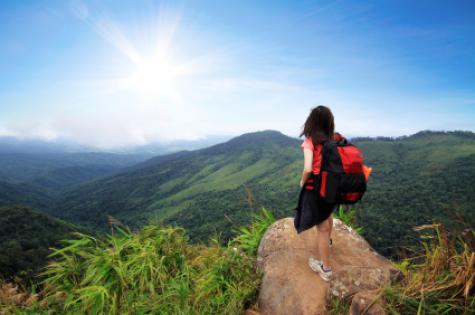You may have heard of ‘adventure therapy’. Over the past decade, the amount of wilderness programs offered in America has skyrocketed. Programs have moved away from the ‘Brat Camp’/Boot Camp model to one that is dedicated to providing a service that encourages a teenager’s strengths and helps families find new balance.
Adventure therapy is no longer about pushing young people to change, but is committed to offering an experience that builds a young person’s capacity for personal growth. And the great news is they are now in Australia!
The first program I was involved with was one of the most innovative in the States.
I saw young people entering the program who were unwilling to participate, who were depressed and angry but who left with emotional skills which would be the envy of many. I continued to lead trips, working with as many different programs as possible before starting a follow-up program just outside of Washington DC. I worked beside a clinical social worker who had extensive experience in supporting adolescents and outdoor education and we researched ideas for combining the best programs and services we could.
These programs are evidence-based. Now, more than ever, the methods that are used in them are essential to achieving adolescent wellbeing.
Teenagers are dealing with a wide array of life challenges stemming mostly from our culture’s emotional climate. We all know about the issues caused by the Internet and mobile phones. The world is just too fast these days and our kids are busier and more stressed than ever. People have come to expect a quick fix or a remedial band-aid. Adventure therapy provides a time where adolescents can unwind, spend time in the now and get a grasp of what’s actually going on.
In the programs that we are running, we are utilising evidence-based clinical practices for working with young people while offering a two-week outdoor expedition.
A lot of parents ask what our goal is for the two weeks and if their child is going to return a “different person.” There are many factors required to create positive change but there are critical factors that we can control in a successful program for adolescents.
- The first factor in initiating change is rapport or therapeutic alliance. Students say to me regularly, “Will, why don’t you get angry with us?” Authentic change comes from a person’s positive goals. We need trust for a relationship to be successful. Adventure expeditions like True North’s provide incredible opportunities to build these relationships. We live together. Our young people get to watch us 24/7. They see that we’re genuine people and this helps to break down their current resistance to traditional authority figures in their lives. Our students get to live in an emotionally safe environment with qualified professionals who are compassionate, non-judgmental and most important, trustworthy.
- The second predictor for a high success rate is to be engaging and positive. The adventure therapy sector has been misrepresented by programs whose model is to break someone down to build up a ‘new’ person. Our goal is not to build character - which research shows is impossible - but to help search for the path that motivates.
I previously mentioned some of the external factors that are plaguing our youth. They’re too busy and ‘technologically numbed’ to spend time being aware and mindful of what’s actually happening around them and to simply enjoy themselves. Essential to our adventure therapy process is an aspect of fun! Teenagers love our programs. No matter how they present on day one they leave feeling that their expedition was the best thing they had ever done.
When a young person is enjoying high self-esteem, the therapeutic work that can be accomplished is fantastic. As parents and practitioners, we often make mistakes in directing our attention to tangible outcomes. Although they are important, school marks or part-time employment need to come second to emotional wellbeing and positive coping skills. An adult would not properly function with low self-esteem or negative coping skills and we need to monitor our children in a similar fashion.
Adventure therapy programs provide an environment where adolescents flourish but it cannot end there.
We need to make sure our teenager has someone that they connect with, are continuing to being supported and ensure that, as parents, we are focused on increasing the things that are going right instead of dwelling on negatives.
As practitioners, our aim is to meet every child, understand where he or she is at and to learn of their strengths and resources. We are then guided by our understanding and create a real and positive change unique to each child.
* * *
To find out more about Will’s adventure therapy programs, visit True North Expeditions. Upcoming dates are
- 9th-22nd September – girls
- 30th September to 4th October – 10-12 year old boys
- 28th October to 10th November - boys








 Agree (0)
Agree (0) Disagree (
Disagree (











__small.png)










